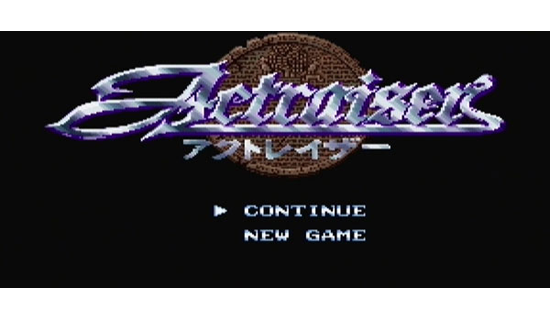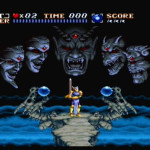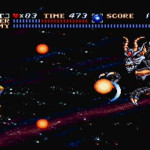The launch period of the Super NES is a very nostalgic-filled time for a lot of people my age, and big part of that is the deluge of new and innovative titles that developers were producing at that time (not to mention the improved graphics and sound that came along with the movement into a new generation). ActRaiser is always held up as a shining example of this innovation, and it absolutely deserves to be. From the moment you the logo flies gradually toward the screen using glorious Mode 7, and the music that sounds as orchestral as can be on a piece of 16-bit hardware kicks in, you see just how wonderfully ActRaiser merges 16-bit technology with fantastic game design and presentation. We have the developer Quintet to thank for this, and surprisingly this is their debut work. ActRaiser was originally slated to be a more standard RPG, but was scrapped and rethought fairly late into development due to it not being impressive enough of a game for a brand new and more powerful console. Quintet would also go on to bring us many games with some thematic simlarities to ActRaiser, such as Soul Blader/Soul Blazer, Illusion of Gaia, Terranigma/Tenchi Souzou, and even a sequel to ActRaiser.
You are god God, and you find yourself awoken by an angel in order to save the people of a town below. Immediately you’re sent down into your earthly avatar (a statue of a warrior) and straight into an action sequence (called “Action Mode”). While these sequences don’t do anything very revolutionary for the action game genre, they play very nicely and look like a good 16-bit game should. They present just the right amount of challenge, with relatively simply designed levels and enemies whose patterns can be ready by the reasonably observant. In these sequences you don’t have to worry about doing anything with your character but jumping, slashing and using a limited stock of powerful magic spells. It’s that relatively simplicity that makes them very satisfying. Bosses of various levels of difficulty also appear at the end of each action stage, and their difficulty levels vary quite a bit.
 |  |
| God beaming himself down into a statue to fight monsters | A look at a day in the life of the angel that you control in the simulation parts of the game |
After completing the first action stage, you may think that you’ll immediately be taken into yet another action stage. This turns out to be completely wrong, as you’re now put into a simulation game (called “Creation Mode”). After some exposition, you find yourself controlling the angel that had previously awoken you with the sole responsibility of helping a town’s population thrive, and therefore believe in God again. You do this through guiding their building of the town and defeating monsters who fly around trying to pillage what they build. As you help the town develop and seal away the monsters, stories unfold around the townspeople themselves that require you to take specific actions. The bottom line is that if you help the townspeople they will help you by giving you offerings of various items that can increase your magic and life stock, and sometimes items that you will later need to help out other towns.
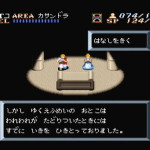 | 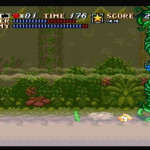 |
| Your loyal subject’s method of communicating with their god | There are some very interesting boss enemies in this game, including giant plants with…tentacles? |
With a total of 6 towns to assist, ActRaiser has a decent amount of playtime for its time. The flow involves getting through an action sequence, actually building up the town you’ve just made inhabitable, and then getting through a final action sequence before moving on to the next town. Combining these two genres into one game could have easily turned out terribly if so much thought hadn’t been given to its pacing. The two styles of game play are also so different that they make for great compliments to one another. I’m not the type of person who overly enjoys sim games, but the sim sections in ActRaiser are just simple and bite-sized enough for me to enjoy them quite a bit. The finale involves going into one final area for continuous action sequences against six of the game’s previous bosses, ending with the final battle against Satan himself (you are God, after all).
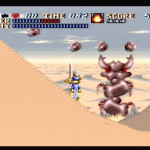 |  |
| Are we in the Sarlacc Pit? It probably isn’t a coincidence that this boss is named Dagoba… | An actual account of what happens when you break into a Pharaoh’s tomb |
The high quality of this game’s soundtrack can not be overstated. To many it remains one of Yuzo Koshiro’s finest and most defining works, and it certainly shows that he understood how to use the SNES/Super Famicom sound chip to its fullest extent right from the beginning of the system’s life. ActRaiser sounds incredibly bombastic and symphonic in its action sequences, and very soothing in its simulation sequences. It’s the perfect capstone to all of the other elements that make this game so great.
While this game’s story can be examined from a couple of different perspectives, what’s maybe the more pessimistic one is that people only turn to God when they’re desperately in need of help, expecting God to take care of all of their problems for them. Once their problems are solved, they cast God aside once again to go back to their now improved lives. No matter how you choose to interpret the theme though, it makes for interesting food for thought while playing.
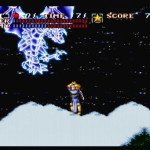 | 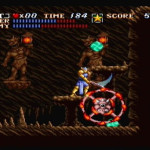 |
| One of the most visually impressive bosses of the game, the Wyvern | One of the stranger bosses of the game, the Fire Wheel |
If you know anything about Nintendo of America’s censorship policies at the time, it won’t surprise you to hear that certain aspects of this game were slightly tweaked for the North American release. You no longer play as God, but rather the God-like being known as “The Master”. The final boss is similarly not Satan, but rather Tanzra, “The Evil One”. Obviously these changes were very minor in nature, and the allegory is still incredibly obvious. Apart from removing some of the directly religious subtexts, several other changes were also made from the Japanese version. The command to use your currently selected magic was rather odd in the Japanese version: holding Up and pressing Y (this really tripped me up when I played through the Japanese version much later on in life, I had to consult the manual to figure it out). This was changed to simply be pressing X or A. The difficulty of the action sequences was adjusted to be significantly lower, and the passage of time in the simulation sequences was sped up to be significantly faster. Most players will likely consider these all to be changes for the better, unless someone is really looking for a greater challenge or a slightly more drawn out game (even so, I was able to clear the Japanese version without many additional difficulties). The action sequences can still be found with their original difficult intact by selecting Professional Mode, which allows you to play only through the action sequences without any of the simulation.
For those looking for slightly more modern ways to play this classic, your best option is the Wii Virtual Console. There was also a port for mobile phones in 2003 that not only stripped out all of the simulation parts of the game, but also did not even include all of the action levels from the original game. Not to mention thinking of having to play this game on a mobile phone makes me a little ill.
I can’t help but feel like Enix had planned to do more with the ActRaiser franchise than they ended up doing. Apart from the sequel that would arrive a few years later, there was also a 3 volume ActRaiser manga. Making a short run of manga for a video game was certainly not unheard of in Japan, but generally it was reserved for those series that were perceived as having some amount of staying power. Regardless, perhaps it would be good for Square Enix to decide to follow up on this well-loved franchise? Though given the state of Square Enix as of this writing, perhaps it wouldn’t be very good for the franchise itself.
